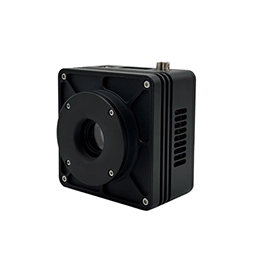SWIR sensors mainly rely on the principle of imaging via target-reflected light. Their imaging characteristics are similar to grayscale visible light images. However, the colors in shortwave infrared images are not the actual colors, resulting in high imaging contrast and clear expression of target details, making them very suitable for target recognition.
SWIR sensors are less affected by atmospheric scattering, possess strong fog, haze, and smoke penetration capabilities, have long effective detection distances, and are significantly better adapted to climatic conditions compared to visible light imaging;
Under low-light night vision conditions facilitated by atmospheric airglow, photon irradiance is mainly distributed within the 1.0-1.8um SWIR wavelength range. This gives SWIR sensors an inherent advantage over visible light night vision imaging. The swir image sensor can extract image details in deep shadows and penetrate through window glass for imaging, making them particularly suitable for use in darkness or at night.
In the 0.9-1.7μm wavelength range, laser source technology is mature (1.06μm, 1.55μm), which gives SWIR sensors a significant comparative advantage in covert active imaging applications.
Most of the current ADAS (Advanced Driver Assistance Systems) primarily rely on visible light cameras. However, in many situations such as nighttime, dense fog, heavy rain, and strong sunlight glare, their efficiency or sensitivity is poor.
These conditions are where SWIR sensors excel. In the foreseeable future, it is expected that visible light cameras, infrared cameras, LiDAR, and millimeter-wave radar will coexist to cover all extreme conditions jointly, ensuring high redundancy and safety in intelligent driving systems, thereby achieving a higher level of automation.
Moreover, the detection of distant objects is also a significant functional requirement in high-speed driving scenarios. When observing at a distance, scattering by airborne particles often causes blurriness, making distant objects difficult to recognize. Since the wavelengths in the SWIR band are longer than visible light, light does not scatter easily, making it very suitable for long-distance observation.
SWIR sensors can provide unique target image information that conventional methods such as visible light imaging, low-light night vision, and infrared thermal imaging cannot offer. SWIR sensor technology bridges the spectral gap between low-light night vision and mid-wave infrared imaging, enabling "seamless detection" across the three atmospheric infrared transmission windows. This capability is crucial for capturing comprehensive infrared image information of distant targets.
Another notable advantage of SWIR sensors is their ability to image through glass. For SWIR image sensor technology, specially-made expensive lenses or housings suitable for harsh environments are almost unnecessary, making them very suitable for complex and diverse automotive scenarios.



